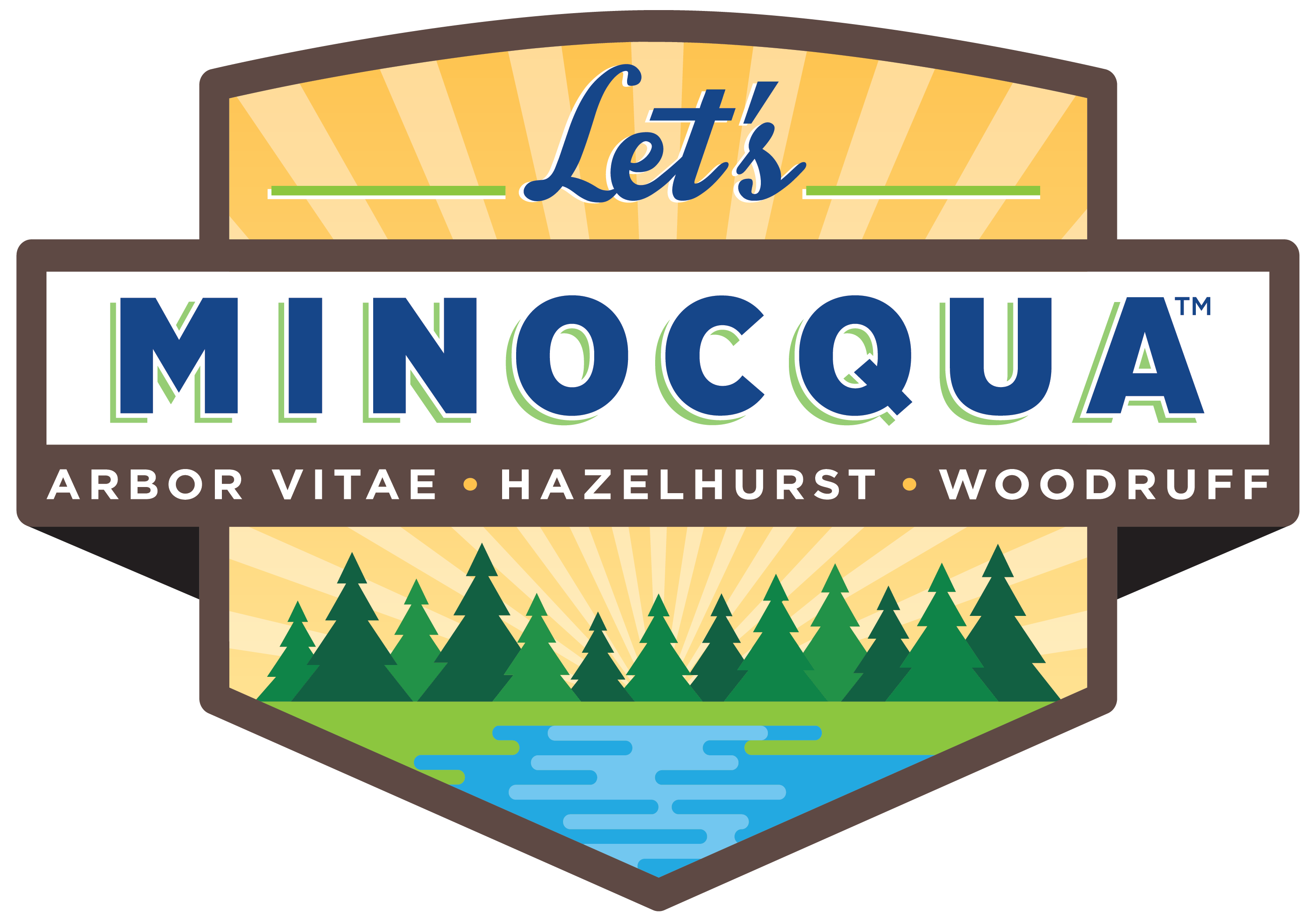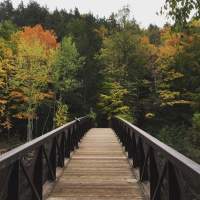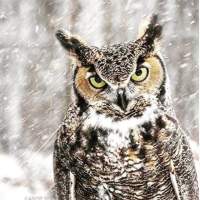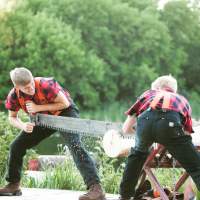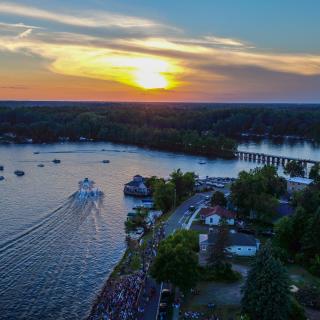The waters and woodlands of the Minocqua area create an ideal habitat for wildlife. Some species are easily seen—a bald eagle soaring overhead or a deer standing statuesque in a clearing. Others are rarely glimpsed—a bobcat prowling the underbrush or a fox climbing up a tree.

Most of the Northwoods’ native wildlife is wary of humans, but with patience, you can experience the thrill of seeing and hearing reclusive critters few others are likely to observe. Red fox like grasslands and meadows; watch patiently at town edges and near airports and schools—anywhere there are large open spaces. The gray fox is smaller and warier, staying deep in the forest for cover. It’s one of only two canine species in the world that can climb trees.
Black bears are sometimes seen raiding a backyard bird feeder or trying to get at the BBQ sauce left on our outdoor grills, but seeing a bear in the forest is a rarity. Being quiet as you walk in the woods is the best way to catch a glimpse of one in its natural setting. As with any wildlife, be still and let the animal keep its distance. Trying to get too close to any wildlife, especially smaller, more vulnerable species, can stress them and threaten their safety and the safety of their offspring. Frightening wildlife with your presence also isn’t safe for humans.
The playful river otter is a Northwoods favorite. This large, muscular semi-aquatic animal—typically three to four feet long—is covered in short, dark brown fur, and is usually seen in groups. They’re more tolerant of humans, and are beloved for their playful, gregarious nature. Canoe out into a small, quiet lake with good fish habitat and you might be surprised by a family of otters bobbing in what appears to be a game of some sort. In the winter, otters prefer to slide downhill on their bellies, which packs down the snow.Just sit by the water at day’s end, and listen as they call taps with their haunting tremolo.
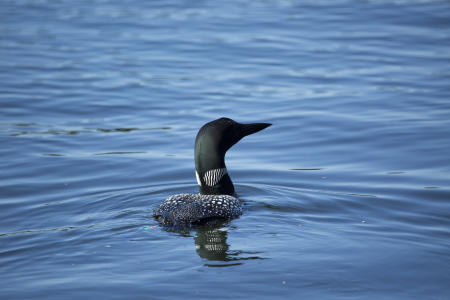
Sighting a snowshoe hare in the winter is a special treat, because their brown summer fur turns white. They will freeze when startled, which makes for easy photo ops.
No matter what kind of wildlife you want to see, you increase your odds by heading outside at sunrise and sunset, when many animals are at their most active.
Wildlife viewing is more comfortable in warm summer temps, but often more successful in winter, when there’s less cover and animals are more focused on finding food than being wary.
One of the iconic creatures of northern lakes, the common loon, is easily enjoyed with minimal effort.
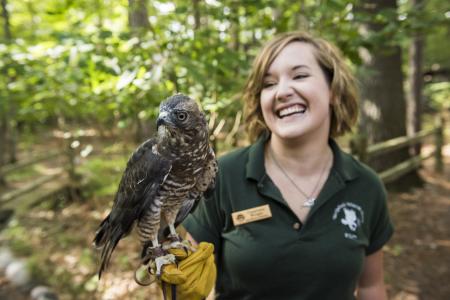
ANIMALS ON THE MEND
At the Northwoods Wildlife Center in Minocqua, their mission includes the rehabilitation, education and research of wildlife. They see hundreds of injured and sick animals each year, including abandoned fawns, a turtle or loon with an embedded fish hook, or a bird with a broken wing or damaged eye. Cecil, the northern sawwhet owl, arrived with a dislocated shoulder after being hit by a car. Whenever possible, patients are released back into the wild. When their injuries make it unlikely they would survive, they become part of the NWC family, such as the case with Hortense the turkey vulture who has resided at NWC for the past 30 years after injuring his wing so severely it had to be amputated.
Visitors have the opportunity to meet some of the residents during a 30-minute indoor/outdoor tour that focuses on reptiles, amphibians, raptors and scavengers. For more information, including tour schedules, visit northwoodswildlifecenter.org.
